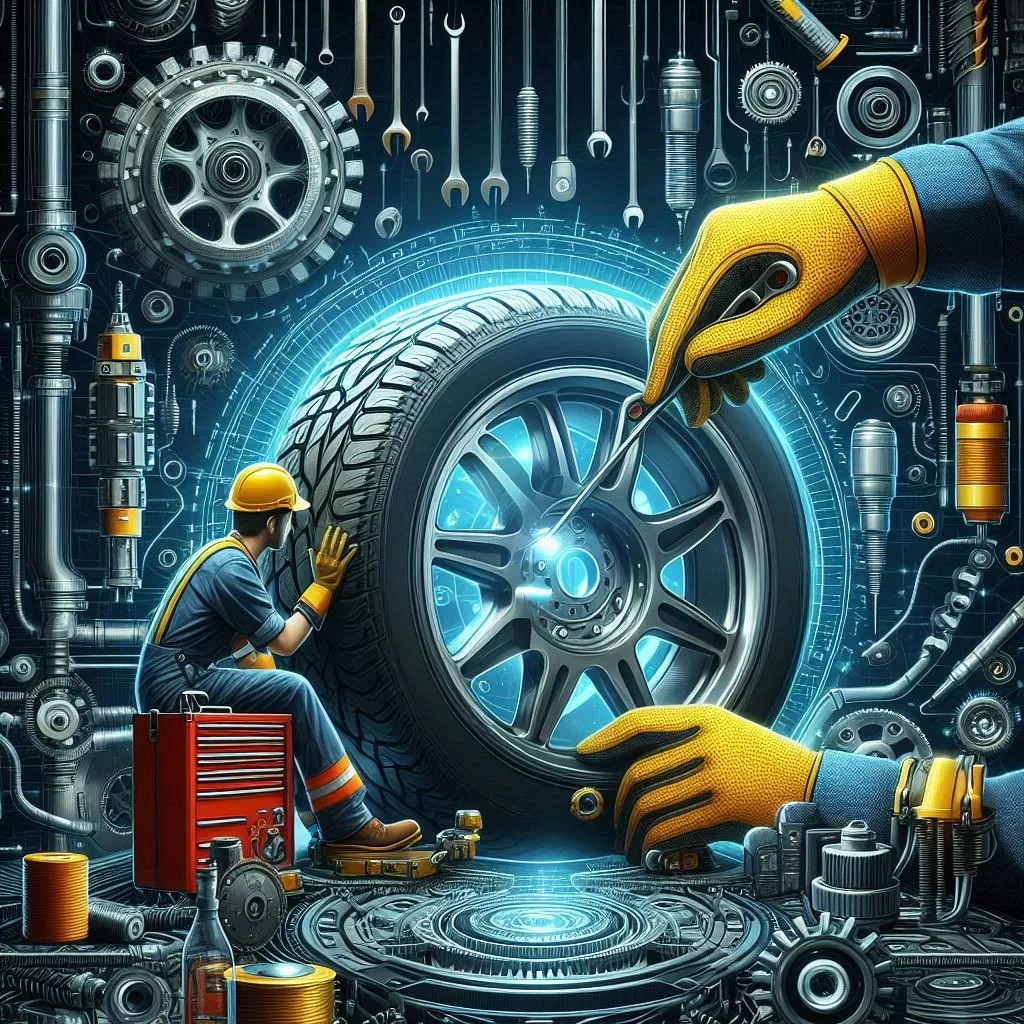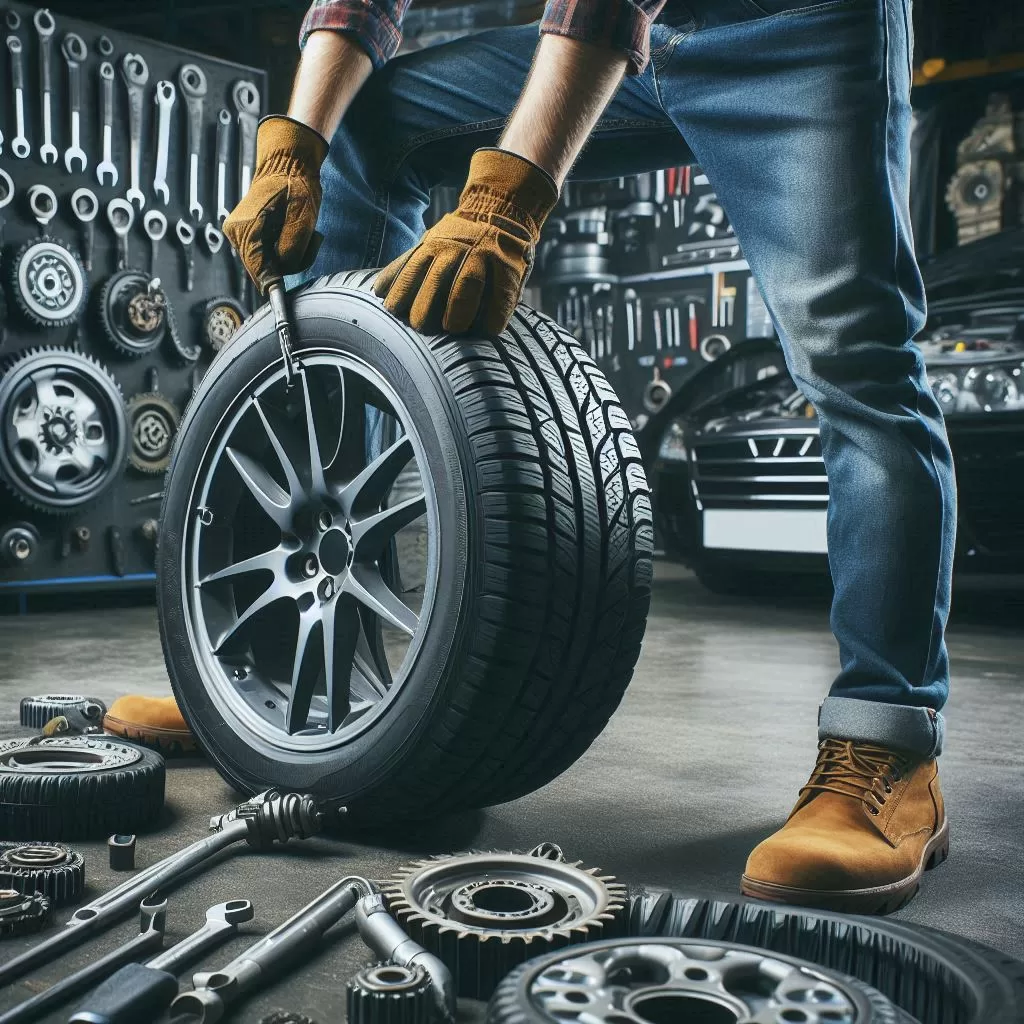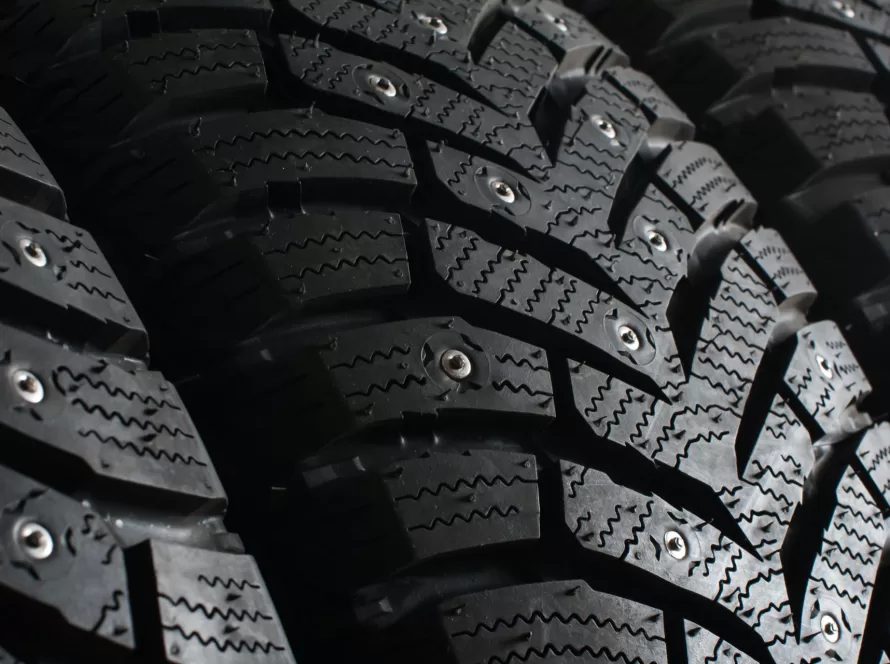
Table of Contents
Introduction: When it comes to car maintenance, tires often don’t get the spotlight they deserve. Yet, these round rubber companions play a crucial role in ensuring our journeys are safe and efficient. Regular tire maintenance isn’t just a box to tick off on your car care checklist; it’s an essential practice that can save lives, money, and the environment. In this article, we’ll delve into why keeping your tires in top shape is vital for both safety and longevity, and provide you with practical tips to do just that.
Why Tire Maintenance Matters
Safety First: Protecting You and Others
Think of your tires as the shoes of your car. Just like you’d struggle to walk on a slippery surface with worn-out shoes, your car faces similar challenges with poorly maintained tires. Proper tire maintenance ensures that your vehicle can handle sudden stops, sharp turns, and wet roads without skidding or losing control. Regular checks and maintenance can prevent accidents, protecting not only your life but also the lives of other road users.
Longevity: Getting More Miles Out of Your Tires
Tires aren’t cheap, and having to replace them frequently due to poor maintenance can be a significant drain on your wallet. By taking care of your tires, you’re not just ensuring safety but also getting the most mileage out of them. Regular maintenance can extend the life of your tires, allowing you to enjoy a smoother ride for longer without the constant worry of wear and tear.
Key Aspects of Tire Maintenance
Tire Pressure: The Foundation of Tire Care
Maintaining the correct tire pressure is the cornerstone of tire care. Tires that are overinflated or underinflated can cause a host of problems, from decreased fuel efficiency to increased wear and tear. Ensuring your tires are at the right pressure helps in optimal contact with the road, leading to better handling and fuel economy.
How to Check Tire Pressure
Checking your tire pressure is straightforward. All you need is a reliable tire pressure gauge. Simply remove the valve cap from your tire, press the gauge onto the valve stem, and read the measurement. Compare this with your vehicle’s recommended tire pressure, usually found in the owner’s manual or on a sticker in the driver’s door jamb.
The Impact of Underinflation and Overinflation
Underinflated tires have too much contact with the road, leading to increased friction, heat, and wear. This can cause your tires to wear out faster and even lead to blowouts. On the other hand, overinflated tires have less contact with the road, which can reduce traction and increase the risk of losing control, especially on wet surfaces. Both scenarios are avoidable with regular checks and adjustments.
Tire Tread Depth: Grip and Traction
The tread on your tires is what grips the road, especially in adverse conditions like rain or snow. Without enough tread, your tires can’t channel water away effectively, increasing the risk of hydroplaning. Regularly checking your tread depth is crucial to ensure you maintain good traction.
How to Measure Tread Depth
One of the simplest ways to measure tread depth is with the penny test. Insert a penny into the tire’s tread groove with Lincoln’s head facing down. If you can see the top of Lincoln’s head, it’s time to replace your tires. For a more accurate measurement, a tread depth gauge can be used to ensure your tires have the recommended tread depth for safe driving.
Recognizing Signs of Worn Treads
Apart from the tread depth test, visually inspect your tires for any signs of uneven wear, bald spots, or cracking. These are indicators that your tires are worn and may need replacement. Paying attention to these signs can prevent sudden tire failures and maintain road safety.
Wheel Alignment: Keeping Your Ride Smooth
Proper wheel alignment ensures that your tires are perpendicular to the road and parallel to each other. Misalignment can cause your vehicle to pull to one side, lead to uneven tire wear, and affect handling and fuel efficiency.
Signs Your Alignment is Off
If your car is pulling to one side, the steering wheel is off-center when driving straight, or you notice uneven tire wear, it’s time to check your alignment. Driving with misaligned wheels can lead to premature tire wear and even affect your suspension system.
Benefits of Proper Alignment
Proper alignment improves vehicle handling, increases fuel efficiency, and extends tire life. It also ensures a smoother ride and reduces the strain on your vehicle’s steering and suspension components. Regular alignment checks are a small investment that can save you money in the long run.
Tire Rotation: Even Wear and Extended Life
Tire rotation involves changing the position of each tire on your vehicle to ensure even wear. Regular rotation helps all tires wear evenly, extending their lifespan and improving performance.
How Often to Rotate Tires
As a rule of thumb, you should rotate your tires every 5,000 to 8,000 miles. However, this can vary depending on your vehicle and tire type. Consult your vehicle’s owner’s manual or a professional mechanic for specific recommendations.
Methods of Tire Rotation
Common methods include the forward cross, the rearward cross, and the X-pattern. Each pattern suits different types of vehicles and tire conditions, so it’s best to follow the guidelines in your vehicle’s manual or seek professional advice.

The Economic Benefits of Regular Tire Maintenance
Fuel Efficiency and Cost Savings
Well-maintained tires contribute to better fuel efficiency. Properly inflated and aligned tires reduce the rolling resistance, meaning your engine doesn’t have to work as hard. This leads to savings at the gas pump and a reduced carbon footprint.
Preventing Costly Repairs
Regular tire maintenance can prevent more serious mechanical issues down the line. For instance, misaligned wheels can affect your suspension system, leading to costly repairs. By keeping your tires in check, you’re avoiding expensive fixes and keeping your car running smoothly.
Environmental Impact of Proper Tire Care
Reducing Waste and Pollution
Tires that are properly maintained last longer, reducing the need for frequent replacements. This not only saves you money but also decreases the demand for tire production, which is resource-intensive and contributes to pollution.
Extending Tire Life and Sustainability
By extending the life of your tires through regular maintenance, you’re contributing to sustainability efforts. Fewer tire replacements mean less waste and a smaller environmental footprint. Plus, maintaining your tires in good condition helps your vehicle operate more efficiently, further reducing emissions.
Practical Tips for Maintaining Your Tires
DIY Maintenance: What You Can Do at Home
Many aspects of tire maintenance can be handled at home with the right tools. Regularly check your tire pressure, inspect tread depth, and look for signs of wear and damage. Keeping your tires clean and free from debris also helps prolong their life.
When to Consult a Professional
While DIY maintenance is essential, some tasks are best left to professionals. Get your tires balanced, aligned, and rotated by experts. If you notice persistent issues like vibrations or uneven wear, consult a mechanic to avoid more significant problems down the road.
Conclusion
Regular tire maintenance is not just about keeping your car in good shape; it’s about ensuring your safety and the safety of others on the road. By taking the time to check your tire pressure, tread depth, alignment, and rotation, you’re making a small investment that can pay off in big ways. Not only do you extend the life of your tires and save money, but you also contribute to a safer and more sustainable environment. So next time you think about car maintenance, remember that your tires deserve your attention just as much as any other part of your vehicle. Stay safe, drive smart, and keep your tires in check!
FAQs
1: How often should I check my tire pressure?
It’s recommended to check your tire pressure at least once a month and before long road trips. Fluctuations in temperature can affect tire pressure, so more frequent checks may be needed during extreme weather changes.
2: What is the recommended tread depth for safe driving?
The recommended tread depth for safe driving is at least 2/32 of an inch. However, for optimal safety, especially in wet or snowy conditions, it’s advisable to maintain a tread depth of 4/32 of an inch or more.
3: Can I rotate my tires myself, or should I go to a professional?
While you can rotate your tires yourself if you have the right tools and knowledge, it’s often easier and safer to have it done by a professional. They can ensure the correct rotation pattern and check for any other issues.
4: How do I know if my wheels need alignment?
Signs that your wheels may need alignment include the vehicle pulling to one side, uneven tire wear, and a steering wheel that is off-center when driving straight. Regular alignment checks can prevent these issues and extend tire life.
5: What are the consequences of driving on worn tires?
Driving on worn tires can significantly increase the risk of accidents due to reduced traction and longer stopping distances. It can also lead to blowouts, which are dangerous at high speeds. Regularly checking and replacing worn tires is essential for safety.


